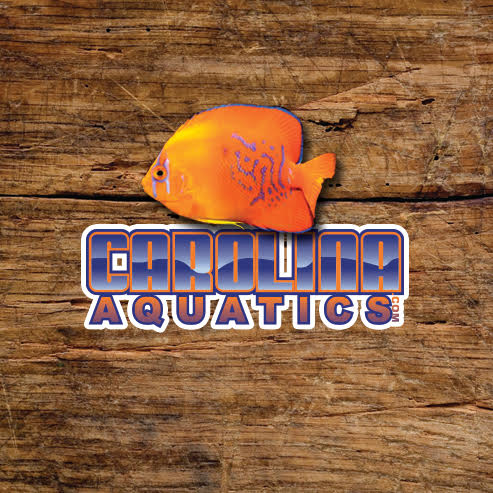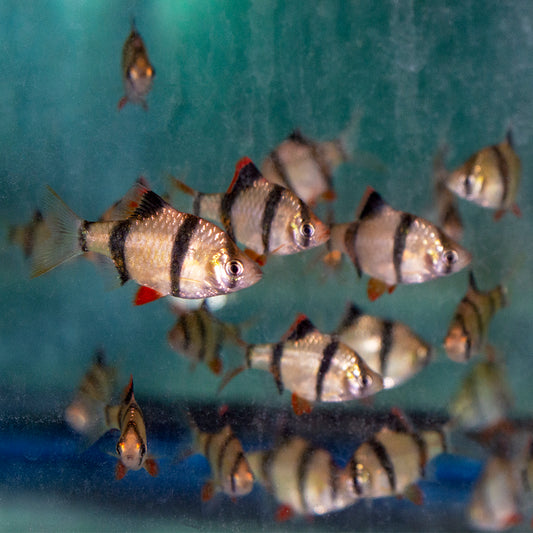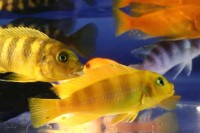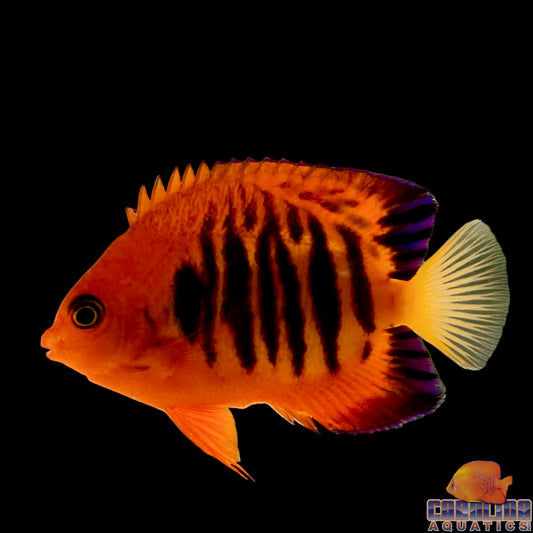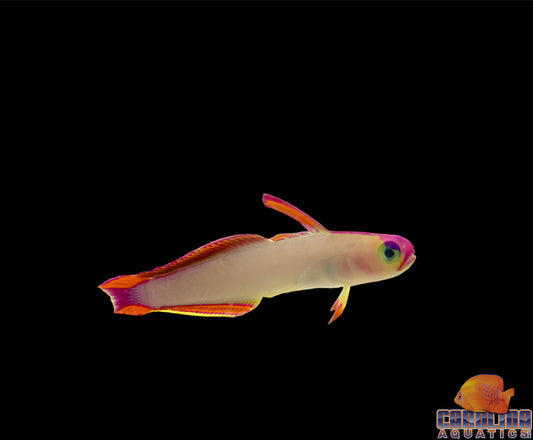Tigger-Pods Live
Reef Nutrition
Tigger-Pods Live
Tigger-Pods Live
126 in stock
Reef Nutrition's popular Tigger-Pods® (live Tigriopus californicus copepods) are cultured using our own nutritious marine algae in our biosecure facility. Tigger-Pods are attractive large red copepods that swim upwards with a stimulating, jerky swimming motion which is attractive to both fish and people. Finicky fish love them!
Tigger-Pods are perfect for culturing and restocking reeftanks & refugiums, as well as an excellent feed for fish, including mandarins and pipefish. They breed rapidly producing hundreds of eggs per female.
Features & Benefits:
Tigger-Pods are great for...
- Propagation
- Increasing Bio-Diversity
- Restocking of Reef Refugiums
Use & Storage:
Care and Feeding
Copepods are relatively easy to care for and maintain. They feed primarily on microalgae and can be fed our phytoplankton-based product blends such as Phyto-Feast.
Copepods can live in your main tank, your refugium, or in a separate dedicated system. In your main tank, they will be eaten and depleted by your fish and corals. In your refugium they will thrive since there are no predators. Pods from your refugium can be periodically harvest and fed to your main tank.
Copepods like to remain inconspicuous, so they will prefer an environment with nooks and crannies. In your main tank they will hide in your live rock and gravel. In your refugium they will hide in your macroalgae and other plants.
Directions for Feeding while in the 6 oz bottle
If you are going to keep them in the bottles for an extended period, remove the lid to increase oxygen in the water and put them in a refrigerator between 34 and 40 F. At this temperature their metabolism will slow, and they require very little oxygen or food. Alternatively, store the bottle in a cool place with the lid removed and feed them 1 drop of Phyto-Feast every other day. This method is for short-term because of waste build-up in the bottle.
Directions for Feeding in a refugium
Add 1 TSP (5mls) of Phyto-Feast per 25 gallons of refugium water. For example: a 100 gallon refugium will receive 4 TSP (20mls). The uneaten algae will make its way up to the display where it will be available to zooplankton and other filter-feeders. Some customer feed this way every day, some feed more infrequently.
What you will need for Culturing in a Stand Alone Container
- We recommend at least 2 culture vessels in case one has issues. The vessels can be a 5 or 10 gallon aquarium, Tupperware container, etc. that holds water. Deep containers or carboys are not suggested.
- Culture water. You will need some freshly mixed clean saltwater. We use BTAC salt in our systems. Do not use water from an existing aquarium or culture as this will contaminate your attempt to start a new culture of copepods. A specific gravity of 1.020 to 1.025 for this species of copepod is suggested
- Small air pump, air stone, and airline tubing. You can also use rigid airline without an air stone. Very light aeration is adequate.
- No heater is needed. This species is very hardy. Try to avoid culture temperature exceeding 85F. Optimal temperature range is 60F to 85F.
- We recommend a small, direct light source like a simple dome, shop lamp - 12 hours on: 12 hours off.
- A food source, such as Phyto-Feast phytoplankton, is recommended.
- We don't use substrate in our cultures, but some people will have crushed gravel or sand and reef rock in their systems. We recommend that all substrate added is sterile and void of life so that you don't get any competing organisms in the culture.
Directions for Culturing in a Stand Alone Container
Fill your container half to two-thirds with clean saltwater. Add the air source to the culture and run it very low (2-3 bubbles per second is ideal). Make sure you use a drip loop and check valve to keep water from getting into your pump and electrical outlet. Add a small amount of Phyto-Feast (1-2mls) to some culture water and stir until homogenized. Then gently pour the diluted algae in so that you can lightly color the culture tank. Do not add too much, or the water will foul. After you've acclimated your copepods to temperature, pour them in and you are all set!
Over the next few weeks, your copepods will reproduce. It may seem at first that they aren't reproducing as fast as you would like, but once they get to a certain population level you will see an "explosion" of copepods in your culture vessel. On a daily or every other day basis, feed small amounts of Phyto-Feast necessary to keep the water lightly tinted, and monitor water quality. Crashes from overfeeding that leads to high ammonia and nitrite are possible, water changes can help if the water quality declines too much. Water changes can be performed when harvesting. See the next section for details.
To harvest your copepods, a plankton collector/strainer of some sort is very helpful. A 90 microns sieve will catch all sizes, while 300 will help to separate out the juveniles and adults from the larval stages. You can siphon your copepods through the collector, insuring that when you feed them to your aquarium you are only adding copepods, not culture water. Discard the culture water and add new, clean saltwater to the culture to bring it back to the original level. You are essentially doing a water change when you siphon out the copepods. Make sure you do not dip your strainer in the copepod culture, and then in your aquarium, and then back in your culture vessel without cleaning it first. Likewise, keep siphon tubing and other equipment you use on your culture separate from equipment you use in your aquariums or larval tanks to avoid contamination. While you can always buy another batch of Tigger-Pods should your culture crash, you can avoid that frustration by not sharing equipment between different systems. You can also scoop the Tigger-Pods with a brine shrimp net but keep in mind that you will need to do a water change on the system as waste accumulates. Scooping can also stir up waste from the bottom, so do it carefully.
You will see "mulm" accumulate on the bottom of the culture after a week or so. The mulm consists of bacteria, organic waste, copepod molts and the copepod nauplii (babies). The nauplii prefer to be on the bottom of the tank feeding on algae and organic waste, so when siphoning this out, try to screen it first and put them back in the culture. It's ok to return some of the mulm to the tank. It's also a good idea to add a small amount of mulm to a new culture since there is bacteria in it that will help rapidly cycle.
Add RO/DI water to the culture as evaporation occurs. It's a good idea to make a mark on the culture with tape or a sharpie to keep track of the original water level.
Receiving your Tigger-Pods
Tigger-Pods are wonderful little creatures, full of energy, fun to watch, and great food for your reef tank. When you receive your shipment, there are some steps you can take that will help ensure their health and survival.
Upon arrival, you may notice the Tigger-Pods aren't very active. This is normal when cold shipped or cold stored. As the bottles warm up, the Tigger-Pods will become more active. It is not uncommon to have a few of the oldest copepods to die from old age. We pack the bottle with life stages above 300 microns, so the bottle will be full of juveniles and egg-bearing females. On average, we add at least 10% more in every bottle to account for any DOA.
Open bottle cap and remove the inside liner, if there is one. Let the bottle stand at room temp for 2 hours to allow the temperature to rise. The Tigger-Pods can be poured directly into your refugium and/or main tank. We recommend that you add copepods after lights out. Turn off all pumps, add the copepods and wait 30 minutes before returning your system to normal function. Since some of the copepods will cling to the side of the bottle after pouring, make sure to rinse the remainders out with clean saltwater so that you get every last animal.
Tigger-Pods feed on microalgae and we recommend feeding them with Phyto-Feast. Phyto-Feast can be dosed directly into both your refugium and main tank. The recommended feeding rate is 1 TSP per 100 gallons for a display tank without refugium or 1 TSP per 25 gallons when dosing to the refugium. This can be done each day, depending on the bio-density of your reef tank. Add the dose near a powerhead or wavemaker to disperse the concentrate when adding to the display. When adding the dose to the refugium, mix it with some tank water to homogenize and then pour it in.
Longer Term Storage
Tigger-Pods can be stored in a refrigerator (33-42°F / 1-5°C) to slow down their metabolic processes, which will increase store shelf life.
Tigger Pods FAQ:
MYTH: Tigger-Pods are a cold water copepod species and will quickly die in a reef system
On the contrary, Tigger-Pods (Tigriopus californicus copepods) LOVE warm water and will thrive in your reef tank. They are native to the west coast of North America. They range from the cold waters of Washington state to the very warm waters of Mexico.
They can live semi-dormant for many weeks when stored in a refrigerator. Warmer water speeds up their metabolism and reproductive rate. Tigger-Pods will reproduce very well in your sump or refugium, especially if they are fed with products that contain large amounts of brown algae. They can also feed a bit on green algae, but it is much harder for them to digest. Phyto-Feast is primarily brown algae and is an excellent feed for all types of copepods. It will typically take 20-35 days to see a significant population spike because of their slow life cycle (laying eggs, hatching, growing to a noticeable size). More information is available in the Tigger-Pod FAQ below.
Geographical Range
While it is true Tigriopus californicus copepods come from the west coast of North America, they have a vast reported range from the tip of Baja California (Mexico) to Alaska. That is just the reported range on paper; it doesn't mean they are not found outside of that range. People have reported seeing them further down the Pacific West Coast, as far south as Honduras.
Climate / Temperature
They do not live in the open ocean - they live in the warm upper splash zone tide pools. They are not adapted to survive in the kind of environment that the open ocean typically provides. Anyone who has spent any time tide-pooling in the upper splash zones of the coast of California can tell you the upper pools can experience extended periods (days to weeks) of daily highs in the mid to high 90's (°F) during summer.
Reproduction Above 74°F
It is a myth that all Tigriopus californicus copepods do not do well in warm conditions originates from mis-interpretation of a research study of Canadian populations. In these samples from much colder water, it was found that 2-5% more males than females were produced when cultured above 75°F. Such a slight departure from a 50:50 sex ratio will have a negligible effect on the breeding success of a population. Furthermore, although this temperature effect may occur in the cold–water adapted strains collected for that trial, no similar studies are reported of populations from warmer waters. Reed Mariculture's Tigger-Pods were originally collected in California, over a 1,000 miles further south. Our Tigriopus californicus copepods have been cultured successfully at near reef temps (mid 70's to 80's during the summer) for several years now.
Size
Tigger-Pods are significantly larger than most copepods that come in with live rock. Most such pods are between 300-500 microns, while Tigger-Pods are 1000-1500 microns. It's difficult to find microplankton in this size range, so Tigger-Pods can be a valuable addition to your reef system.
Culturing
Tigger-pods will typically not thrive in your main tank for three reasons:
- there is no place for them to hide, and they are such attractive food that they get eaten quickly and disappear
- there is not enough food (microalgae) for them
- it takes 20-30 days from when their eggs are laid until they mature into breeding adults ready to start laying eggs, so the chances that they can persist long enough to breed under these conditions is practically zero.
The best way to culture Tigger-Pods is to put them in your sump or refugium where they are safe, or culture them in a separate tank. Either way, give them lots of microalgae (like Phyto-feast) to feed on.
Conclusion
The bottom line is that Tigger-Pods (Tigriopus californicus copepods) are a very good species of copepod to have in your reef system. They are a highly adaptable species that thrive at cold temperatures, reef system temperatures, and intermediate temperatures. They are also very good feed organisms (easy to capture and a good nutritional profile), and will culture well when given the right conditions and food.
Share

Weekly Specials
-
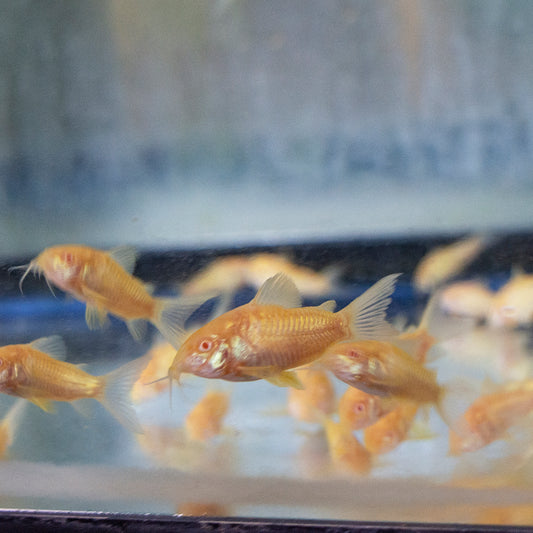 Sale
SaleCory - Albino
Login to view price.Sale -
Shrimp - Peppermint(NO LIMIT)
Login to view price. -
Barb - Tiger
Login to view price. -
African - Asst. 2-2.5in.
Login to view price. -
Angel - Flame
Login to view price. -
Goby - Firefish Purple
Login to view price.Sale -
Gourami - Kissing Pink
Login to view price.Sale -
 Sale
SaleDanio - Pearl
Login to view price.Sale -
African - Lab. Yellow
Login to view price.Sale


